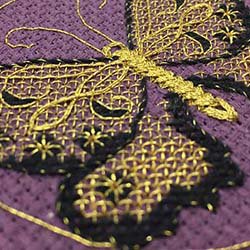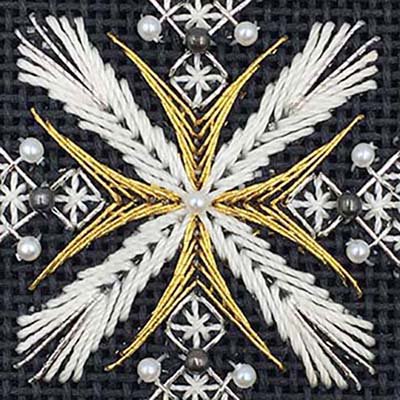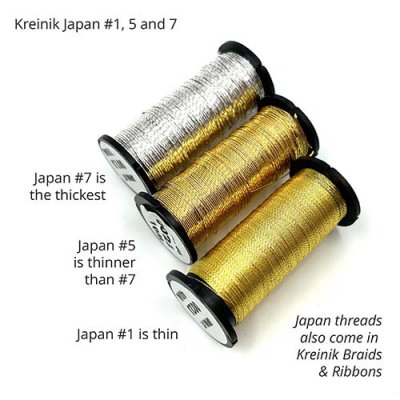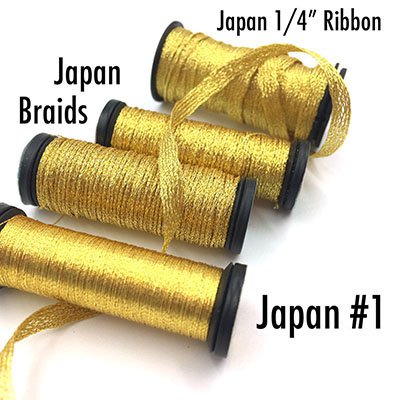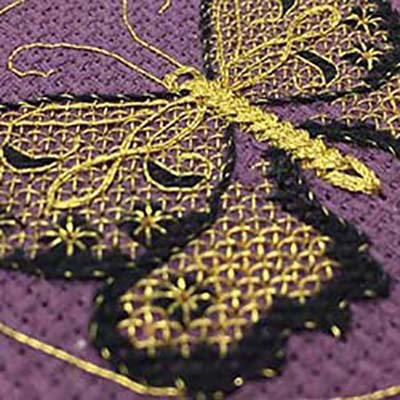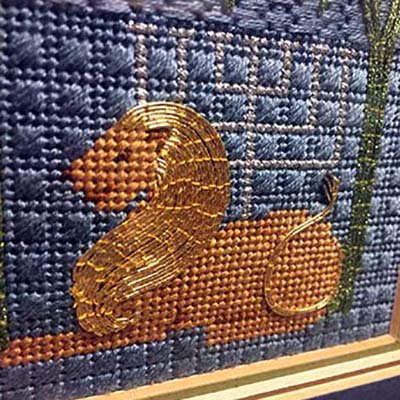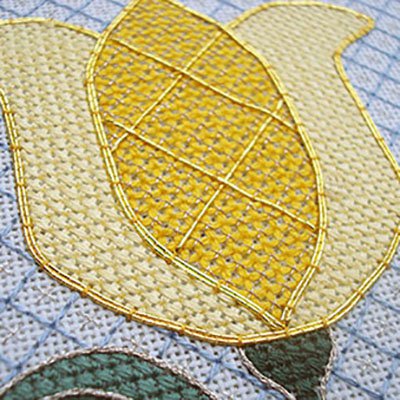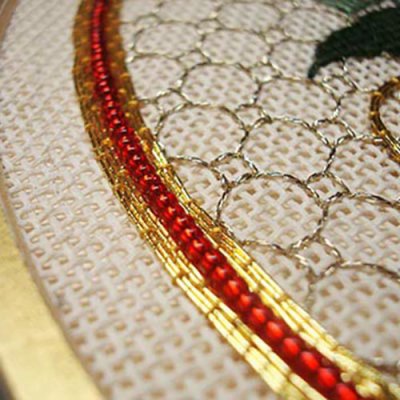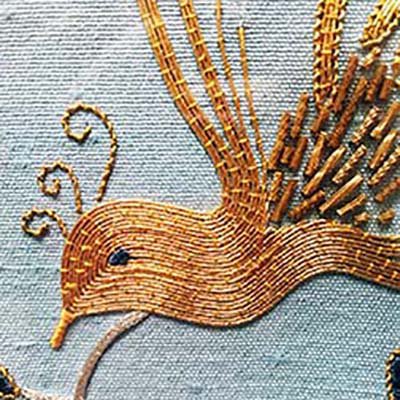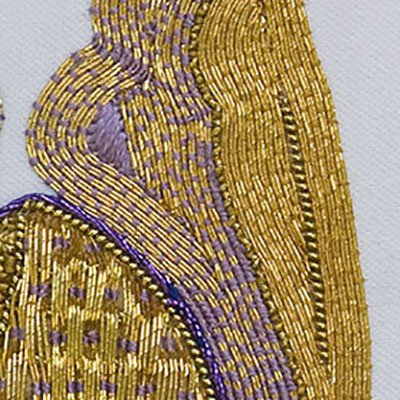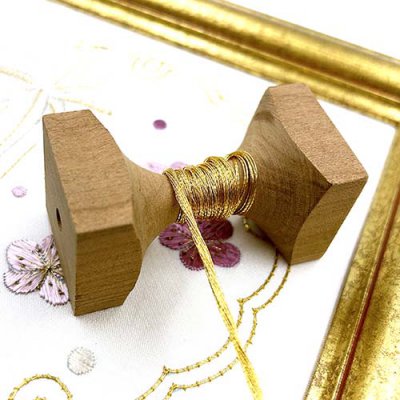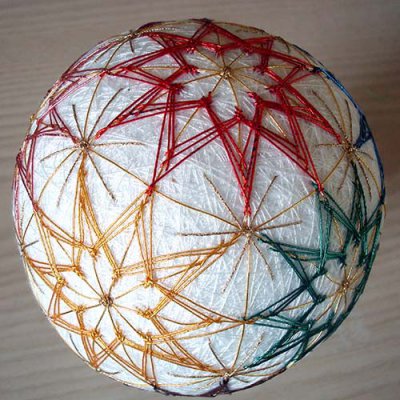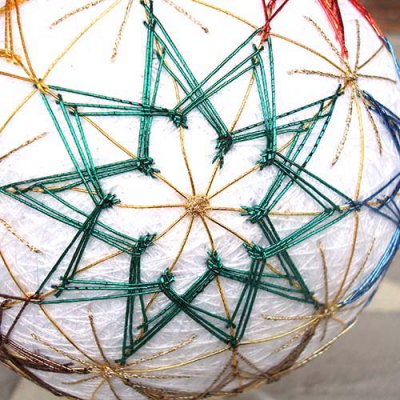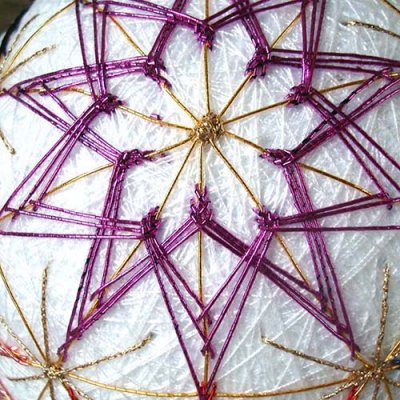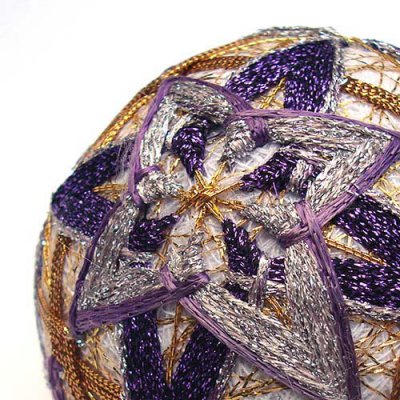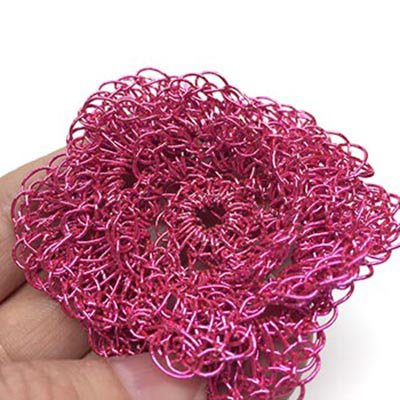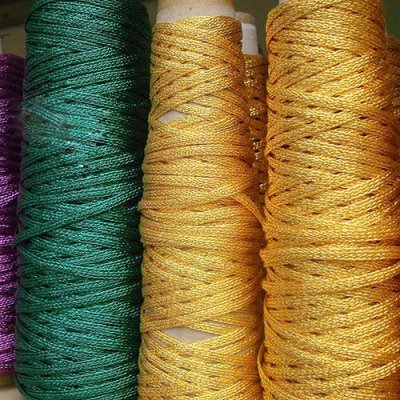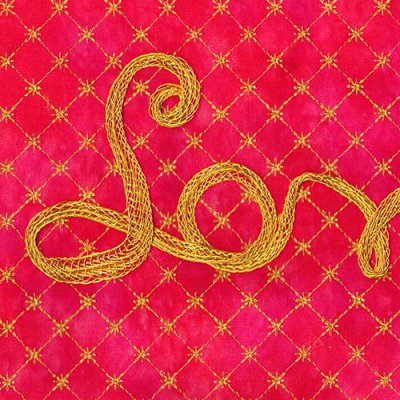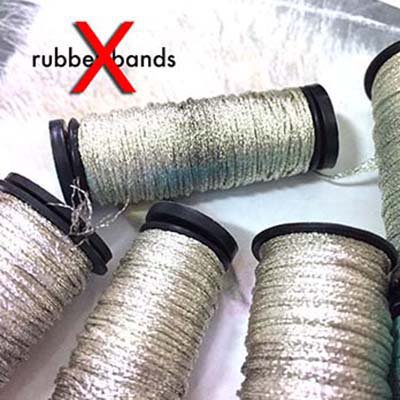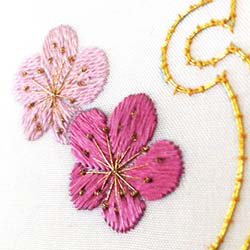How to use Kreinik Japan Threads
In the Kreinik thread line, “Japan Thread” refers to a modern version of an historical fiber. Centuries ago, artisans pounded real gold into flat pieces that were wrapped around horse hair, then couched onto fabric for rich, elegant embroidery. Today, we make a similar type of thread but with less expensive materials. If you want to recreate the supreme elegance of real metal thread embroidery, or historical Japanese embroidery, Kreinik’s Japan Thread line is an ideal place to start.
1. Basic Kreinik Japan Threads come in three sizes:
- Japan #1
- Japan #5
- Japan #7
- Smooth, bright, and shiny, they give the look of stitching with real metals.
2. The smaller the number, the thinner the thread:
- Kreinik Japan #1 is super fine, very thin, the thinnest.
- Kreinik Japan #5 is slightly thicker.
- Kreinik Japan #7 is thicker than #5.
3. Stitch with one, couch the others:
- Japan #1 is a passing thread; stitch through fabric as you would a sewing thread.
- Japan #5 and #7 are gimps, or wrapped threads, and therefore couched onto the surface rather than sewn in and out of fabric. The metallic foil is wrapped around a core fiber, so if you stitch and and out with Japan #5 and #7, the wrapping may separate or come off. You can use it in long stitches in needlepoint or embroidery, as long as the fabric you're using is an open weave or open canvas, and the stitches aren't compact.
- Japan #5 and #7 can be couched singly or multiple strands at a time for unique effects. Couch with a matching color of Japan #1, or a contrasting color of metallic or silk thread depending on the look you want to achieve.
4. Kreinik also makes Japan Threads in Braids, Ribbons and 3/8" Trim:
- This gives stitchers/weavers/fiber-
artists more Japan Thread textures (ie, creative options). A Japan Thread in Kreinik Tapestry #12 Braid, for instance, looks like a checked or serpentine metal thread. - They are thicker, stiffer, and more texturized than the basic Japan Threads. They are best in long stitches or stitches that are more open (not compact) in needlepoint, counted thread, crazy quilting, temari, crochet, and surface embroidery techniques.
- Look for a "J" after the color number, as in 002J or 001J.
- The smaller the Braid number, the smaller the thread. Kreinik Very Fine #4 Braid is the thinnest Braid, for example, and Fine #8 Braid is twice as thick as #4 Braid.
- Kreinik 3/8" Trim, made out of Japan threads, comes in wired version or unwired. This trim is lovely for edging, or couch onto a design (experiment with attaching beads down the center of the woven ribbon).
5. Kreinik Japan Threads are easier to care for than their historical counterparts:
- This generation of Japan Thread is synthetic and thus less expensive and more readily available than real metal threads.
- They have a percentage of real metal, but are non-tarnishing—as long as you don't wrap them with rubber bands! (see below)
- You can dry clean needlework made with Kreinik Japan Threads.
6. One thing you must NEVER do with Japan threads: put rubber bands around the spools. Japan Threads have a small percentage of real metal in the raw material, which can react with the rubber in the band. It will ruin your thread.
Side note on couching Japan Threads: A squared-off spool known as a Koma is often used to hold the thicker Japan Threads or other couching threads as you stitch. The Koma won't roll off like round spools, and you can unwind thread as you couch.



